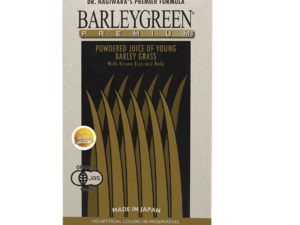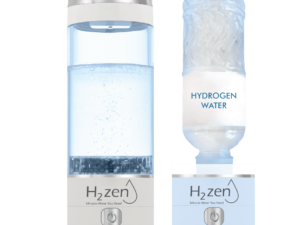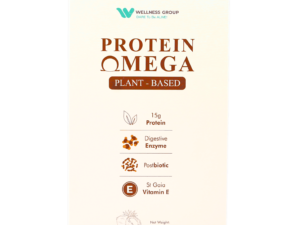Is Hydrogen Water Better Than RO Water? Expert Insights
One surprising fact: over 40% of Malaysian households consider both purity and wellness when picking their drinking water, blending safety and lifestyle goals.
The article lays out a clear comparison between a mechanical filter that removes most contaminants and an enriched option that adds dissolved gas for possible antioxidant effects. Reverse osmosis forces liquid through a semi‑permeable barrier to strip metals and microbes, improving taste but removing minerals and wasting some liquid.
By contrast, hydrogen-enriched choices aim to support recovery and offer a different set of perceived benefits. Readers will learn practical points about taste, upkeep, and kitchen fit for Malaysian homes.
Wellness Group helps local readers choose systems that match space, budget, and needs. They offer tailored advice via WhatsApp at +60123822655 during Monday–Friday 9:30 am–6:30 pm and Saturday–Sunday 10 am–5 pm.
Key Takeaways
- RO provides high purity and contaminant removal for household safety.
- Hydrogen-enriched formats focus on potential antioxidant and recovery support.
- A hybrid route—purify first, then enrich—covers both safety and wellness.
- Consider taste, maintenance, and under‑sink or countertop space in Malaysia.
- Wellness Group offers local, personalized guidance via WhatsApp during set hours.
Hydrogen Water vs RO Water at a Glance
Below is a simple comparison to help Malaysians choose between enrichment units and tight-membrane purifiers.
What enrichment means and how it’s made
Enriched options dissolve molecular hydrogen into liquid using electrolysis, pressurized canisters, or ready-to-drink pouches. This adds H2 without changing colour or smell. Many users report a crisper, slightly sweet mouthfeel and the potential for antioxidant effects.
How the membrane purification works
Reverse osmosis forces liquid through a semi‑permeable membrane plus pre/post filters. The multistage process removes up to about 99% of dissolved contaminants, including heavy metals and microbes. The result is consistent purity across different sources.
Quick snapshot: purity, minerals, taste, and intended benefits
RO often lowers minerals and produces a neutral, mineral‑light taste unless a remineralization cartridge is added. Enrichment typically preserves source minerals while supplying molecular hydrogen for potential antioxidants.
- If purity is the priority, membrane systems deliver predictable results.
- If the aim is wellness support, enriched options provide dissolved H2 for antioxidant interest.
For quick comparisons or product matching in Malaysia, message Wellness Group on WhatsApp at +60123822655 during business hours for tailored guidance.
The Science Behind Hydrogen Enrichment and Wellness Claims
Researchers focus on how tiny gas molecules might affect cellular stress and recovery.
Molecular hydrogen, free radicals, and oxidative stress
Molecular hydrogen is studied for its interaction with free radicals, the reactive species linked to oxidative stress in the body.
Because the molecule is small, it may diffuse quickly and selectively target harmful radicals without bluntly blocking needed signals.
Cellular access: mitochondria, inflammation markers, and recovery
Some studies track markers tied to inflammation and mitochondrial function. Changes in these markers may relate to perceived boosts in energy and faster recovery after exercise.
Clinical work remains early, but trial reports note modest improvements in soreness and readiness for the next session.
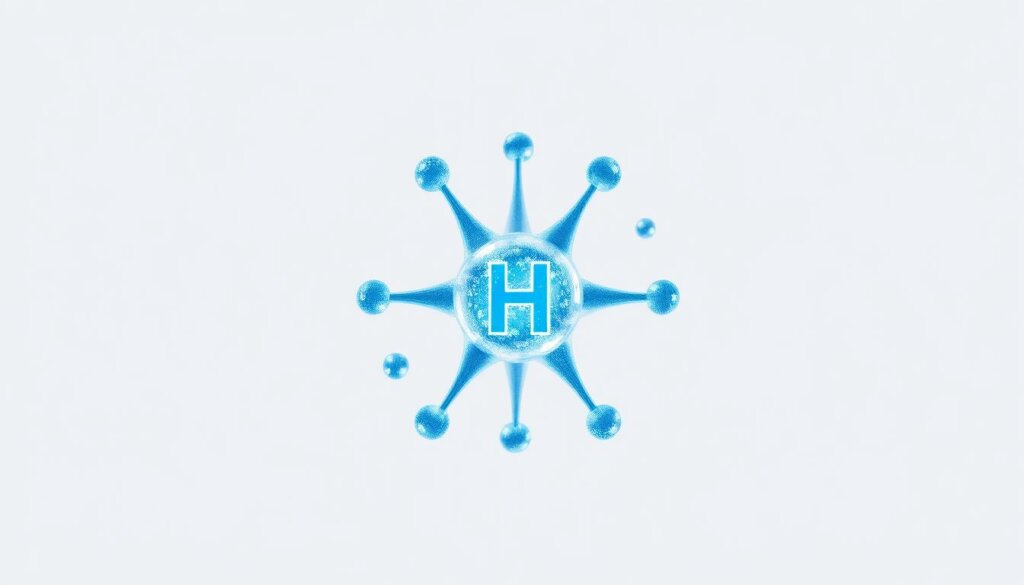
What research suggests so far versus where evidence is still emerging
Current research shows promise but needs larger, longer trials to confirm lasting benefits and exact mechanisms.
For summaries of recent studies or practical recommendations in Malaysia, readers can visit this study summary or ping Wellness Group on WhatsApp at +60123822655 during operating hours for one‑to‑one guidance.
Reverse Osmosis Fundamentals for Safer Drinking Water
Many homes trust a staged filtration train to remove the toughest dissolved impurities before drinking reaches the tap. Reverse osmosis uses pressure to push liquid through a semi‑permeable membrane, letting H2O pass while rejecting most dissolved salts, organics, bacteria, and pyrogens.
Multi-stage filtration and the membrane’s role
A typical setup pairs a sediment pre-filter, the RO membrane, and a polishing post-filter for taste. This sequence catches particles first, then strips dissolved hazards at the membrane, and finally polishes flavour.
Benefits: what households gain
Reverse osmosis reduces heavy metals, microbes, and many chemicals. It also improves taste and delivers consistent quality for brewing, cooking, and baby formula.
Trade-offs and modern fixes
The process can lower minerals and creates some wastewater. Regular maintenance keeps flow rates and removal of contaminants steady. Many owners add remineralization cartridges to restore mouthfeel.
- reverse osmosis and layered filters give reliable purity.
- Plan for periodic cartridge and membrane changes.
- Smart reminders or service alerts make upkeep simple.
For cabinet fit, osmosis system sizing, or local service in Malaysia, Wellness Group can advise on under‑sink setups, filter schedules, and remineralization options via WhatsApp at +60123822655 during business hours.
Is hydrogen water better than RO water?
Homeowners often weigh predictable safety against emerging wellness claims when selecting their drinking system.
Head‑to‑head: antioxidant support versus guaranteed purity
Reverse osmosis delivers a mechanical barrier that removes most contaminants, giving consistent purity for cooking, brewing, and infant formula.
By contrast, hydrogen water adds dissolved H2 to offer possible antioxidant effects linked to quicker recovery and reduced exercise soreness.
“Many households choose RO first for reliable safety, then add enrichment to explore extra wellness benefits.”
Health priorities: urban pollutants, metabolic concerns, and performance
In cities with variable supplies, people often pick reverse osmosis to ensure the cleanest starting point. This lowers risk where source quality is inconsistent.
Those focused on metabolic markers or athletic performance may try hydrogen options for potential antioxidant support. Current research is promising but still developing around oxidative stress.
- Choice depends on household needs: infants and seniors typically favour purity first.
- Active adults may add molecular hydrogen to pair safety with wellness features.
- Many Malaysians combine both approaches for the best of each.
For a side‑by‑side product comparison suited to Malaysian homes, message Wellness Group on WhatsApp at +60123822655 during business hours for tailored recommendations.
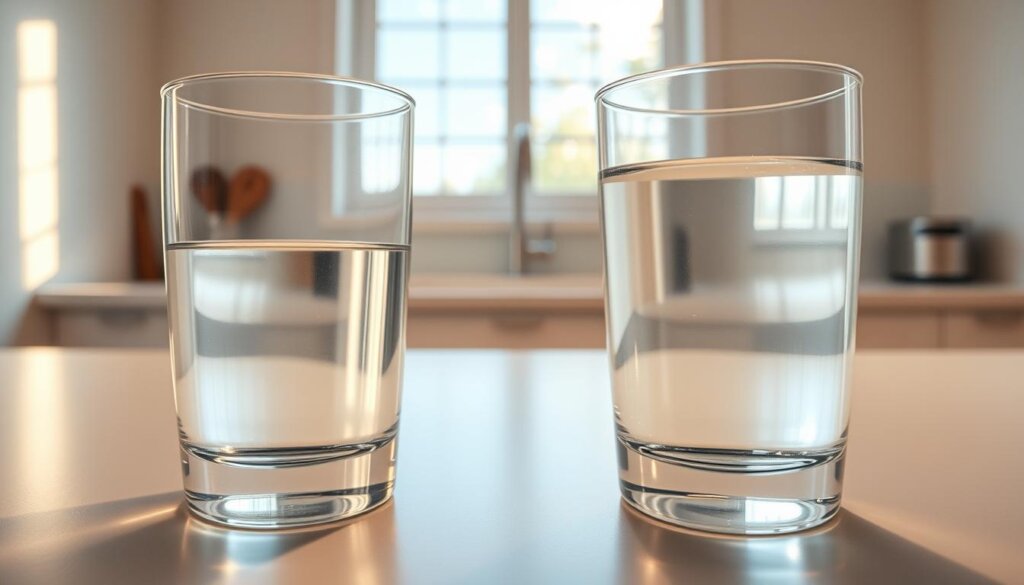
Choosing for Malaysia today: lifestyle, cost, and upkeep
Choosing a household system in Malaysia often means balancing daily habits with long‑term costs. Families compare space, energy use, and how often someone will change parts.
Estimated ownership and maintenance patterns for typical households
Under‑sink reverse osmosis setups sit out of sight and offer a set‑and‑forget feel. They include pre‑filters, an RO membrane, and a post‑filter. Owners plan periodic filter and membrane replacements to keep quality steady.
Countertop and portable generators suit active users who want on‑the‑go enrichment. These units need electrode or cartridge care to keep performance consistent. Routine maintenance prevents lapses and keeps taste consistent.
Space, energy, and daily use: under‑sink RO vs portable hydrogen units
- Convenience: an under‑sink system serves a household that drinks mostly at home.
- Flexibility: portable bottles and countertop generators fit commuters and gym goers.
- Space: under‑sink installs need room for a tank and filter train; generators use little counter area.
- Energy: electrolysis draws a small amount of power; RO relies on tap pressure and occasional pumps.
Wellness Group helps Malaysians estimate total cost of ownership, set filter schedules, and pick space‑saving systems. Message them on WhatsApp at +60123822655 (Mon–Fri 9:30 am–6:30 pm; Sat–Sun 10 am–5 pm) for tailored advice.
Tip: match daily use patterns to the system choice to balance budget, upkeep, and quality.
Hybrid Approach: Purify with RO, Then Enrich with Hydrogen
A hybrid route blends household-grade purification with a targeted enrichment step to meet both safety and wellness goals.
Why this pairing works: Many households first run tap through a reverse osmosis system to remove contaminants and ensure consistent quality. They then pass that output into a countertop or enclosed generator that infuses molecular hydrogen by electrolysis.
Why many combine technologies for both safety and bioactive benefits
The two-step flow keeps safety front of mind while adding potential antioxidant advantages. Purification handles microbes and dissolved impurities. The enrichment step supplies dissolved hydrogen for perceived health benefits and recovery support.
Practical setups: under-sink RO plus countertop/enclosed generators
Common pairings include an under‑sink reverse osmosis feeding a compact generator on the counter. Enclosed units that accept RO output are another neat option. These setups make one clean pour that is also H2-rich.
“Pairing purification with enrichment gives households a single, safe glass that also aims to support recovery and antioxidant goals.”
- Control taste and minerals: owners can add a remineralization cartridge before enrichment for livelier levels.
- Simple workflow: RO first, then generator—no special handling or complex monitoring needed.
- Training and recovery: athletes may time enriched drinks around workouts for perceived recovery benefits.
| Component | Main Role | Typical Benefit |
|---|---|---|
| Under‑sink reverse osmosis | Purification | Removes dissolved contaminants and microbes |
| Countertop generator | Enrichment | Infuses molecular hydrogen for antioxidant interest |
| Remineralizer (optional) | Mineral balance | Restores mouthfeel and minerals before enrichment |
Installation help: Wellness Group recommends pairings that fit Malaysian kitchens and handles sizing, installation, and maintenance advice via WhatsApp at +60123822655 (Mon–Fri 9:30 am–6:30 pm; Sat–Sun 10 am–5 pm).
Connect with Wellness Group in Malaysia
Wellness Group makes it simple for Malaysian families to match kitchen space and daily routines to the right hydration setup.
Personalized guidance via WhatsApp:
Contact and hours
Message +60123822655 on WhatsApp for quick help choosing between reverse osmosis, hydrogen water, or a hybrid that fits your needs.
Business hours: Monday–Friday 9:30 am–6:30 pm; Saturday–Sunday 10 am–5 pm.
What they help with
The team explains systems in plain language and aligns your choice with desired water quality, kitchen space, and day‑to‑day use.
They arrange installations, set maintenance reminders, and offer evidence‑aware summaries of recent research so expectations stay realistic.
- Compare features and costs to match household needs.
- Plan installations with remineralization options and compact generators that infuse dissolved H2.
- Recommend routines for drinking use and filter upkeep so quality remains steady.
“Whether purity or wellness matters most, they map a clear path from needs to the right systems without guesswork.”
Conclusion
Choosing a home hydration plan comes down to matching safety needs with daily routines and goals.
For dependable contaminant removal, reverse osmosis gives consistent purity and taste, though it may need occasional remineralization and filter care. For added antioxidant interest, a small enrichment step supplies dissolved hydrogen that some people use for performance and recovery.
A practical route for Malaysian homes is a hybrid: run tap through reverse osmosis first, then add enrichment if desired. This keeps safety central while letting users explore potential health benefits without extra risk.
For a final recommendation tailored to your kitchen, WhatsApp , Wellness Group at +60123822655 during listed hours; they will match system choice to space, upkeep, and goals.
FAQ
What does “hydrogen‑enriched” mean and how is it produced?
The label refers to drinking liquid that contains dissolved molecular hydrogen gas. Producers add the gas using electrolysis devices, magnesium‑based tablets, or specialized generators. The process boosts dissolved H2 levels without changing pH much, and units range from portable bottles to countertop machines.
How does reverse osmosis purify through a semi‑permeable membrane?
Reverse osmosis forces water through a fine membrane that blocks dissolved solids, heavy metals, microbes, and many chemicals. Pre‑ and post‑filters protect the membrane and improve taste. It delivers very high purity by physically removing contaminants rather than chemical neutralization.
What are the main differences in purity, minerals, taste, and claimed benefits?
RO delivers near‑complete contaminant removal and a neutral taste but strips minerals. Hydrogen enrichment aims to add bioactive H2 for antioxidant effects while often relying on filtered source water for safety. Taste varies: RO can taste flat unless remineralized; hydrogen‑enriched options keep mouthfeel similar to the source liquid.
How might molecular hydrogen interact with free radicals and oxidative stress?
Molecular hydrogen can selectively neutralize certain reactive oxygen species in lab and small clinical studies, potentially lowering oxidative markers. Researchers emphasize that effects depend on dose, frequency, and baseline health. Evidence looks promising but is not definitive for all conditions.
Can dissolved H2 reach mitochondria and affect inflammation or recovery?
Small studies suggest dissolved H2 can cross membranes and influence cellular signaling tied to inflammation and recovery after exercise. Results vary by protocol and population; athletes and people with mild inflammatory conditions show some benefits in trials, but larger studies are still needed.
What does current research support and where is evidence still emerging?
Early human and animal trials indicate potential antioxidant, anti‑inflammatory, and performance support effects. Long‑term outcomes, optimal dosing, and effects in diverse populations remain under study. Regulatory bodies do not yet endorse broad health claims.
What contaminants does an RO system typically remove?
RO systems cut lead, arsenic, fluoride, nitrates, most dissolved salts, and many organic chemicals, plus bacteria and protozoa when combined with proper pre‑ and post‑treatment. Performance depends on membrane quality and maintenance.
What are the trade‑offs of using RO regarding minerals, water waste, and upkeep?
RO reduces beneficial minerals, wastes some feed water during filtration, and requires periodic filter and membrane changes. Users often add remineralization cartridges to restore taste and electrolytes. Regular maintenance keeps contaminant rejection high.
How do remineralization cartridges and smart alerts help modern RO systems?
Remineralizers add calcium, magnesium, and trace elements to improve flavor and alkalinity. Smart systems track filter life, leak risks, and flow rates to prompt timely service, reducing user error and preserving water quality.
How do antioxidant support from H2 and purity from RO compare head‑to‑head?
RO guarantees contaminant reduction and consistent purity. Enrichment with molecular hydrogen targets potential biochemical benefits. Which matters more depends on safety needs versus interest in bioactive effects; combining the two gives both advantages.
Which health priorities affect the choice: urban pollutants, metabolism, or performance?
In polluted areas or older plumbing, removing heavy metals and chemicals takes priority, favoring RO. For metabolic support or recovery, dissolved H2 may offer added benefits. Users should match system choice to local water quality and personal goals.
What are typical ownership and maintenance costs for Malaysian households?
Under‑sink RO setups range from moderate to higher upfront costs with filter/membrane replacements every 6–24 months and occasional service. Portable hydrogen units cost less initially but need cartridge or battery upkeep. Total cost depends on brand, usage, and service plans.
How do space, energy, and daily use compare between under‑sink RO and portable H2 devices?
Under‑sink RO needs dedicated space, a drain connection, and sometimes a storage tank; it uses mains pressure but little electricity. Portable hydrogen generators are compact, battery or plug powered, and moveable for travel or desk use. Choice hinges on household habits.
Why combine RO purification with hydrogen enrichment?
Combining ensures water safety and adds potential bioactive benefits. RO removes contaminants, then a hydrogen generator or infusion cartridge enriches the purified liquid with dissolved H2 without reintroducing impurities.
What practical setups work for an RO plus hydrogen arrangement?
Common arrangements pipe RO output into a countertop hydrogen generator or use a refillable hydrogen bottle filled from the RO tank. Some commercial systems integrate remineralization plus hydrogen modules for turnkey operation.
How can someone in Malaysia get personalized guidance and installations?
Wellness Group Malaysia offers tailored consultations, comparisons, and installations. Contact via WhatsApp +60123822655 during business hours for system advice and study summaries.
What are the business hours for Wellness Group Malaysia?
They operate Monday–Friday from 9:30 am to 6:30 pm and on weekends from 10:00 am to 5:00 pm for customer support and consultations.

Khloe Tan
Khloe Tan is a Certified Nutritionist, Corporate Wellness Trainer, and Holistic Health Specialist with over 15 years of experience in the health and wellness industry. She has delivered more than 100 talks nationwide, inspiring and educating diverse audiences on nutrition, lifestyle, and sustainable wellness. Her work has positively impacted over 3,000 lives, and she continues to champion holistic approaches to well-being in both corporate and personal settings.
Feature Product
-
Hydrogen Water FIlter/Generator
H2zen Portable (White/ Blue)
RM2,600.00 Add to cart Buy NowRated 0 out of 5

